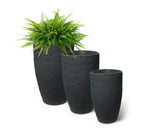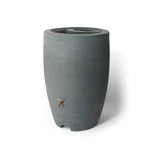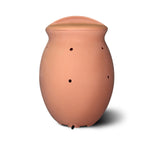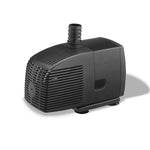🌻 August Gardening Tips & and To-Dos: Keep Your Garden Thriving in Late Summer
🌻 August Gardening Tips & To-Dos: Keep Your Garden Thriving in Late Summer
August may be the tail end of summer, but your garden still has plenty of life left in it! While the heat might tempt you to take a break, this month is ideal for harvesting, prepping for fall, and keeping your plants healthy through the last stretch of summer.
Here are essential gardening tasks and tips to keep your garden thriving in August:
🥕 1. Harvest, Harvest, Harvest!
August is peak harvest season for many summer crops:
- Tomatoes, peppers, zucchini, beans, cucumbers, and corn should be picked regularly to encourage continued production.
- Herbs like basil, oregano, and thyme can be trimmed back and dried or frozen for later use.
- Keep an eye on melons and pumpkins — they’re almost ready!
Pro Tip: Pick produce early in the morning for the best flavor and shelf life.
🌱 2. Sow Fall Crops
Now's the time to plant fast-growing vegetables for fall:
- Lettuce, spinach, radishes, turnips, kale, and broccoli can all be direct-sown now in many zones.
- Use row covers or shade cloth to protect young seedlings from intense sun.
Tip: Soak seeds for a few hours before planting to improve germination in dry soil.
🌼 3. Deadhead & Prune
- Remove spent flowers from annuals and perennials to encourage new blooms.
- Lightly prune shrubs and roses, but avoid heavy pruning that could stimulate tender growth vulnerable to fall frost.
Don’t forget: Keep up with weeding! Weeds go to seed quickly in late summer.
💧 4. Water Wisely
- Water early in the day to minimize evaporation and disease.
- Deep, infrequent watering (rather than daily shallow watering) encourages stronger root systems.
- Consider installing soaker hoses or drip irrigation if you haven't already.
Bonus: Add mulch to retain moisture and suppress weeds.
🐛 5. Watch for Pests & Disease
Warm weather brings out all kinds of critters:
- Inspect under leaves for aphids, spider mites, and whiteflies.
- Look for signs of powdery mildew, especially on squash and cucumbers.
- Use organic sprays or remove affected foliage to keep issues from spreading.
🌾 6. Plan for Next Season
- Start mapping out your fall garden and order any seeds you’ll need.
- Think about planting garlic, bulbs, or cover crops in September or October.
- Begin prepping raised beds or clearing out summer crops that have finished producing.
August is also a great time to start composting if you haven’t already.
🌻 Bonus: Enjoy the Beauty!
Don’t forget to enjoy your hard work:
- Cut fresh flowers for bouquets.
- Host a garden-to-table meal with your harvest.
- Snap photos to track your garden’s progress — and share your victories!
Happy gardening! 🌿








